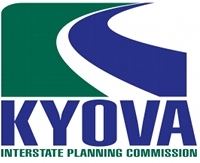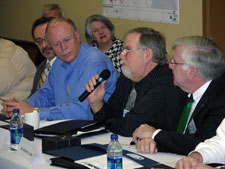







KYOVA's Role
The KYOVA Interstate Planning Commission is the metropolitan planning
organization (MPO) serving Cabell County, WV; Wayne County, WV; and Lawrence County, OH. Federal highway and transit
statutes require urbanized areas greater than 50,000 in population to
designate MPOs as a condition for spending federal highway or transit funds.
As the agency that led the 2040 MTP development, KYOVA’s role was to ensure
that the plan development was an inclusive process that effectively engaged
regional and state partners, business and development community, as well as
local citizenry. KYOVA is ultimately responsible for overseeing Plan
implementation through the development of a multimodal approach to regional
transportation decision-making.
Steering Committee
A project Steering Committee was established to help guide the development of
project goals and to validate recommendations during the planning process. The
intent of the Steering Committee was to serve in an advisory role, but with significant
participation in visioning exercises and information feedback. The Committee included
citizens and agency representatives at the federal, state, regional, and local levels
who represented a broad cross-section of the KYOVA region. The Steering Committee met
with the project team four times during the life of the study.
Vision of the 2040 MTP
We envision a growing region serviced by a safe and sustainable transportation system that provides real choice among modes of travel. Our transportation system will contribute to an enhanced quality of life by providing attractive connections between destinations for motorists, bicyclists, pedestrians, and transit users without compromising air quality or cultural and environmental resources, and it will support the efficient movement of people and goods at both the local and regional scale.
Goals of the 2040 MTP
Goal #1: Preserve, maintain, and enhance the existing transportation system.
Goal #2: Support the economic vitality of the region, especially by enabling global competitiveness, productivity, and efficiency.
Goal #3: Improve the operational efficiency of the transportation network.
Goal #4: Enhance the safety of the transportation system for all users.
Goal #5: Enhance the security of the transportation system for all users.
Goal #6: Protect and enhance the environment and promote energy conservation.
Goal #7: Enhance the integration and connectivity of the transportation system, across and between modes, for people and freight.
Goal #8: Maintain financial responsibility in the development and preservation of the transportation system.

